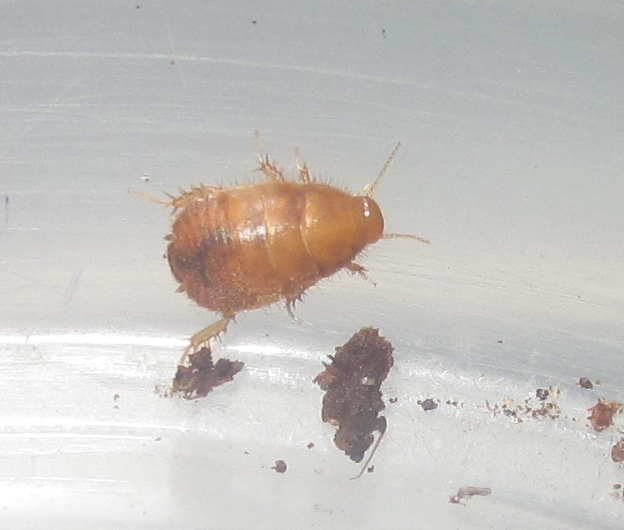Roachcrossing Winter '23 Package Series Pt. 3/5
««« Previous post in series • Next post in series »»»
Got a couple more
Euthlastoblatta species to add to the collection, since my
E.diaphana are doing so well for me, hopefully these new ones will as well! 😄
First off, Kyle sent me 6 small nymphs of Euthlastoblatta abortiva, AKA the "Fragile Cockroach". These have been a coveted species among US hobbyists, they can be found in very far southern Texas, however considering their small size, remote and small range within the US, and the lack of hobbyists going to said area looking for really tiny roaches, they've not entered culture until just late last year. Thankfully, Kyle got some, and they've proven rather easy to breed without any particularly special care requirements. 😁
I've got my nymphs in a well ventilated deli cup with a thin layer of coconut fiber as the substrate, one half kept humid, the other half dry. On top of this I've given them crumpled paper towels for hides (my latest go-to for Pseudophyllodromids), and I'm keeping them at aroud 75-80F°. I'll be feeding them dog food and fruits.
Here are some pictures of one of the larger (but still very small) nymphs:
So colorful even at this young age, I can't wait to see what color changes they go through as they get older! 😍
Kyle also sent me a much more robust starter culture of
Euthlastoblatta sp. "Everglades, FL", the old female he sent me
months ago failed to produce viable ooths and died shortly after arrival. Whereas in this box, he sent me three younger adult females, an adult male and a subadult nymph. 😁 There were ooths in their shipping cup, and one of the females was actively laying an ooth on arrival, so yeah I should be set now.
Interestingly, when I first got this species from Kyle, I kinda thought they might just be E.diaphana that were introduced to the Everglades... But after seeing a large nymph in person, it's obvious these are an entirely different species (perhaps even an undescribed, FL endemic). So, really hoping to get a large colony of these established, definitely a very nice find from Florida!
I've got them set up in a well ventilated deli cup with a thin layer of coconut fiber as the substrate, and I'm keeping them humid, but not super moist or anything. I've given them crumpled paper towels for hides, and I'm keeping them at aroud 75-80F°. I'll be feeding them dog food and fruits.
Here are some pictures of the adults and the nymph:
 |
| Adult female |
 |
| Adult male |
 |
| Subadult nymph |
A very nice species, one I'm confident I'll be able to breed with this new group. 😊
Well, that does it for this post, thanks for reading, hope everyone enjoyed, stay safe, and I'll see you all next time! 😉






















































